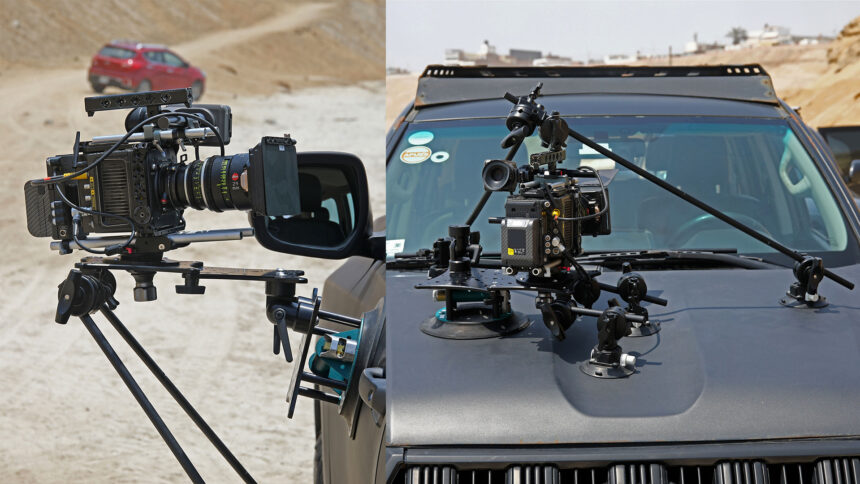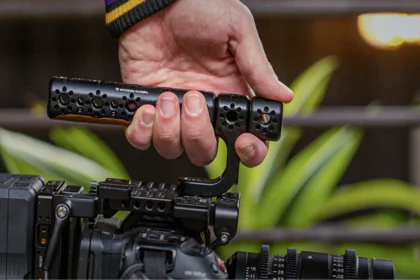Vehicular filming has become a core technique for automotive content creators, filmmakers, and beginner videographers who want dynamic and cinematic moving shots. Whether you are shooting a commercial, a car review, a travel vlog, or a high-action sequence, the right accessories play a critical role in achieving stable, safe, and professionally framed visuals. This guide explores all the essential accessories for car rigging and vehicular filming, equipment lists, cost breakdowns, safety considerations, and expert recommendations to help you choose the right tools for the job.
- What Are the Essential Car Accessories for Filming?
- Interior Car Camera Mounts for Stable In-Cabin Shots
- What Equipment Do You Need as a Videographer for Car Filming?
- The 30-60-90 Rule for Cars Explained
- What Equipment Do You Need for Car Photography and Videography?
- iFootage Car Mount and Other Popular Rigging Options
- Essential Accessories for Car Rigging and Vehicular Filming Cost Breakdown
- Safety Considerations for Vehicular Filming
- Buying Guide: Choosing the Best Car Rigging Equipment
- FAQs
What Are the Essential Car Accessories for Filming?
Car rigging requires strong, stable, and reliable equipment because filming on a moving vehicle introduces vibration, speed, wind pressure, and uneven road conditions. Essential accessories generally fall into three categories: core mounting systems, stabilising tools, and supporting add-ons.
Camera Suction Mounts
Suction mounts are the foundation of most vehicular filming setups. They attach to flat, smooth surfaces such as car doors, windows, bonnets, or rooftops. The stability of your footage depends highly on the mount quality.
Single suction mounts are suitable for lightweight mirrorless cameras or action cameras.
Dual and triple suction systems are preferred for heavier camera bodies because they distribute weight more evenly and improve shock absorption.
When choosing a suction mount, always look for high-strength vacuum seals, a clear weight rating, and compatibility with ball heads, magic arms, or quick-release systems.
Professional Camera Car Mounts
Professional camera car mounts are designed for higher load capacity, better rigidity, and more dynamic shooting conditions. These mounts are ideal when using cinema cameras, long lenses, or high-speed driving shots.
They are commonly used on the hood, trunk, side doors, or even underneath the chassis for low-angle action shots. A well-built camera car mount is engineered to minimise vibration, maintain a fixed angle under strong wind pressure, and offer multi-point control for precise framing.
Interior Car Camera Mounts for Stable In-Cabin Shots
Interior shots add depth and personality to automotive content. These shots include driver monologues, cabin reviews, dialogue sequences, and lifestyle vlogs.
Headrest mounts offer stable over-the-shoulder shots.
Dashboard mounts provide a clean, centred perspective of the driver.
Roll-bar clamps or cross-bar mounts are useful for cars with exposed internal bars or open frames.
Interior mounts must be compact, non-intrusive, and vibration-resistant to avoid distracting movement inside the cabin.
What Equipment Do You Need as a Videographer for Car Filming?
A videographer shooting vehicular content needs more than just mounts. Additional gear enhances stabilisation, colour control, and overall quality.
Stabilizers and gimbals are essential for handheld tracking shots around the car.
Lenses such as 24mm, 35mm, or 50mm primes are ideal for wide, detailed, and cinematic angles.
ND filters help maintain proper exposure under harsh sunlight.
Polarizing filters reduce reflections on car windows and body panels.
Extra batteries, memory cards, and protective cases ensure uninterrupted shooting.
A well-prepared videographer always carries clamps, friction arms, small tools, and backup mounting accessories.
The 30-60-90 Rule for Cars Explained
The 30-60-90 rule is a fundamental guideline in automotive cinematography that helps determine the best camera angles for capturing cars.
A 30-degree angle is ideal for dynamic rolling shots that emphasise speed and motion.
A 60-degree angle highlights the vehicle’s dimensions, giving a balanced view of the front and side.
A 90-degree angle shows the complete side profile, often used for commercial and feature shots.
Understanding these shooting angles allows beginners and professionals to frame vehicles more effectively and create visually compelling sequences.
What Equipment Do You Need for Car Photography and Videography?
Car photography overlaps heavily with vehicular filming gear, but there are a few additional considerations.
Stabilizers and Gimbals
Handheld shots require stabilisation to maintain smoothness, especially when walking around the vehicle or filming within tight spaces. Motorised gimbals help eliminate micro-shakes and directional shifts.
Best External Rigs and Cage Systems
Camera cages and rig systems are essential for mounting multiple accessories such as monitors, microphones, or wireless transmitters. They also help distribute weight more evenly during vehicular shooting.
Accessories and Add-Ons Checklist
Every rigging setup should include:
- Safety cables for additional security
- Anti-vibration pads to reduce road-induced shaking
- Magic arms and clamps for flexible mounting
- Quick-release plates for fast repositioning
- Counterweights to stabilise heavy rigs
- Mini tripods or base plates for static shots nearby
These add-ons help make your filming setup more reliable and adaptable.
iFootage Car Mount and Other Popular Rigging Options
The iFootage car mount is a popular choice among videographers due to its reliability, strong suction power, and build quality. These mounts are typically equipped with vacuum pump indicators to ensure safe attachment before shooting.
iFootage systems support DSLRs, mirrorless cameras, action cameras, and certain lightweight cinema cameras. Their components are usually modular, making them adaptable to complex rigging situations. Beginners appreciate them for user-friendly operation, while professionals rely on them for stable high-speed shots.
Essential Accessories for Car Rigging and Vehicular Filming Cost Breakdown
Rigging equipment varies widely in price depending on the brand, materials, and load capacity.
Entry-level setups usually cost between $80 and $200 and include basic suction cups and lightweight mounts.
Mid-range setups cost between $200 and $500 and offer dual or triple suction mounts with stronger materials.
Professional systems typically start at $500 and can exceed $2,000 for full kits, including articulated arms, stabilisers, multiple suction bases, and safety setups.
Beginners should start with mid-range systems for a balanced mix of reliability and affordability.
Safety Considerations for Vehicular Filming
Safety is the most important part of car rigging.
Using Safety Cables and Redundant Mounts
Always attach safety cables between the camera and the vehicle. This ensures that even if a mount loses suction, the equipment stays secure.
Checking Suction Mount Pressure
Use mounts with pressure indicators, and re-pump them every 20 to 30 minutes. Dust, heat, or moisture can weaken suction unexpectedly.
Legal and Road Guidelines
Filming on public roads requires caution. Always select low-traffic areas, maintain moderate speeds, and avoid attaching mounts to moving parts like windows or sunroofs.
When possible, conduct vehicular filming in controlled environments.
Buying Guide: Choosing the Best Car Rigging Equipment
When selecting car rigging equipment, look for:
Build quality
Weight capacity
Compatibility with your camera
Quick-release support
Vibration resistance
Weatherproof materials
Choose mounts with reliable suction indicators and make sure all accessories connect firmly to prevent micro-movement during shooting.
FAQs
What accessories do I need for car rigging?
You need suction mounts, safety cables, anti-vibration pads, magic arms, quick-release plates, stabilisers, and compatible camera rigs.
How do you mount a camera safely on a moving car?
Use multi-point suction mounts, attach safety cables, and ensure the mount surface is clean and dry before filming.
How much does a professional car rigging kit cost?
Professional kits typically start around $500 and can reach $2,000 or more depending on the components.
Can I use a suction mount for high-speed shots?
Yes, but only with professional-grade multi-suction systems and proper safety measures.
What are the safest car mounts for beginners?
Dual or triple suction mounts with built-in vacuum indicators are the safest options.




